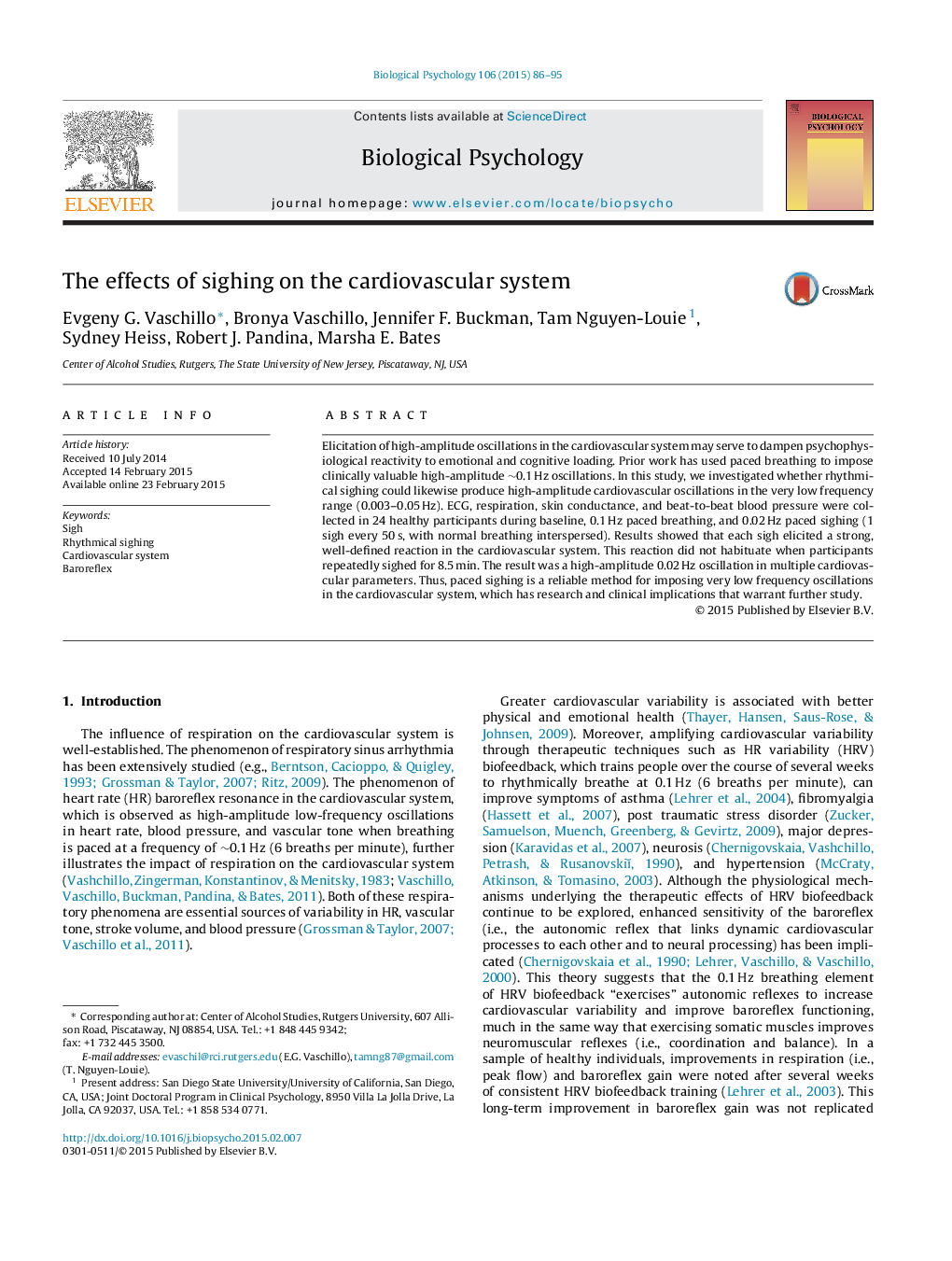| Article ID | Journal | Published Year | Pages | File Type |
|---|---|---|---|---|
| 7278649 | Biological Psychology | 2015 | 10 Pages |
Abstract
Elicitation of high-amplitude oscillations in the cardiovascular system may serve to dampen psychophysiological reactivity to emotional and cognitive loading. Prior work has used paced breathing to impose clinically valuable high-amplitude â¼0.1Â Hz oscillations. In this study, we investigated whether rhythmical sighing could likewise produce high-amplitude cardiovascular oscillations in the very low frequency range (0.003-0.05Â Hz). ECG, respiration, skin conductance, and beat-to-beat blood pressure were collected in 24 healthy participants during baseline, 0.1Â Hz paced breathing, and 0.02Â Hz paced sighing (1 sigh every 50Â s, with normal breathing interspersed). Results showed that each sigh elicited a strong, well-defined reaction in the cardiovascular system. This reaction did not habituate when participants repeatedly sighed for 8.5Â min. The result was a high-amplitude 0.02Â Hz oscillation in multiple cardiovascular parameters. Thus, paced sighing is a reliable method for imposing very low frequency oscillations in the cardiovascular system, which has research and clinical implications that warrant further study.
Keywords
Related Topics
Life Sciences
Neuroscience
Behavioral Neuroscience
Authors
Evgeny G. Vaschillo, Bronya Vaschillo, Jennifer F. Buckman, Tam Nguyen-Louie, Sydney Heiss, Robert J. Pandina, Marsha E. Bates,
